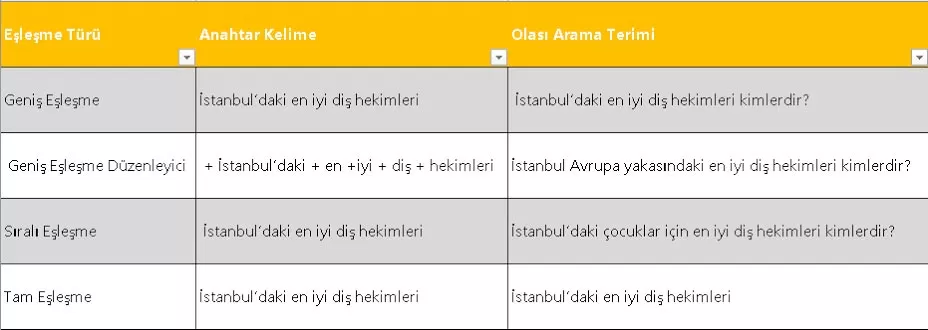Google Ads keyword matching options are tools that allow you to display your services or products in search results according to the terms users have searched for.
You can reach your target audience more easily by using keyword matching options, and you can choose different matching options suitable for the strategy you have determined. In this blog post, we will examine keyword matching options in detail with definitions and examples.
What Are the Keyword Matching Options?
- Wide mapping
- Sequential mapping
- Exact match
- Negative matching
Without understanding the logic of keyword matching options, the likelihood of your ads being successful is quite low. So much so that if you ignore this and run your ads; you may be wasting more than 95% of your budget for Google Ads due to irrelevant clicks.

1. Wide mapping option
For example:
women’s hats
Matching Searches:
buy women’s hat
women’s clothing
women’s scarves
winter hats for women

2. Sequential Matching
For example:
“women’s hats”
Matching Searches:
blue women’s hats
buy hats for women
women’s hats for sale

3. Exact Match
For example:
[kadın şapkaları]
Matching calls:
women’s hats
hats for women
women with hats

4.Negative Match
Suppose you sell interior paints. You can produce your products with paints, varnishes, enamels, water-based and oil-based paints, etc. you will prevent your ads from being shown for art paints such as gouache and watercolor, while making them available for those looking for them. This is where negative mapping comes in. this keyword type will show your products or services for specific search terms, and you will be able to exclude your ads for keywords you don’t want to be searched for.

